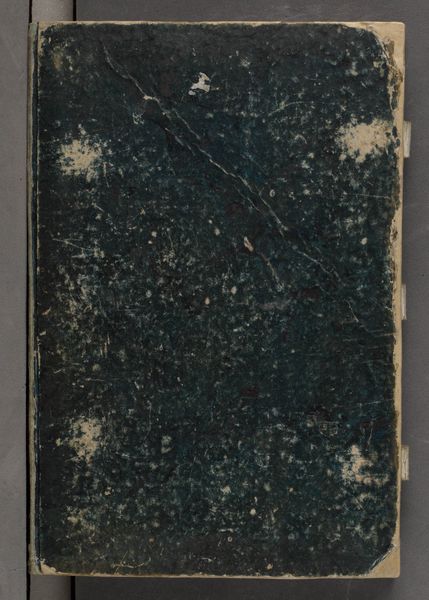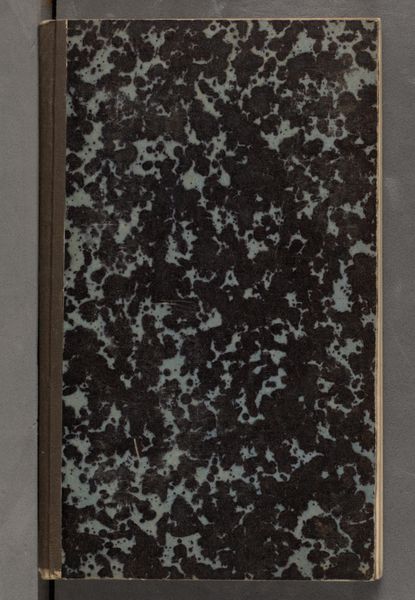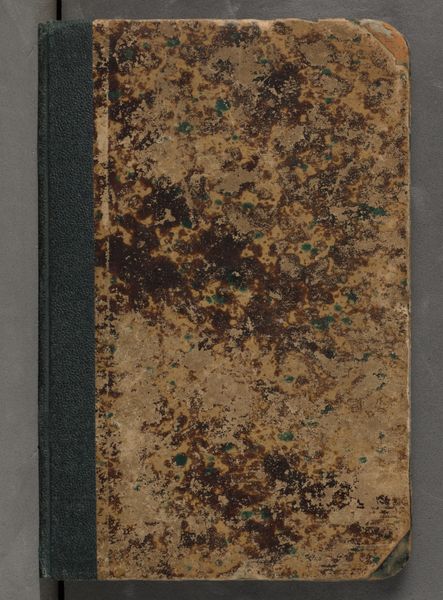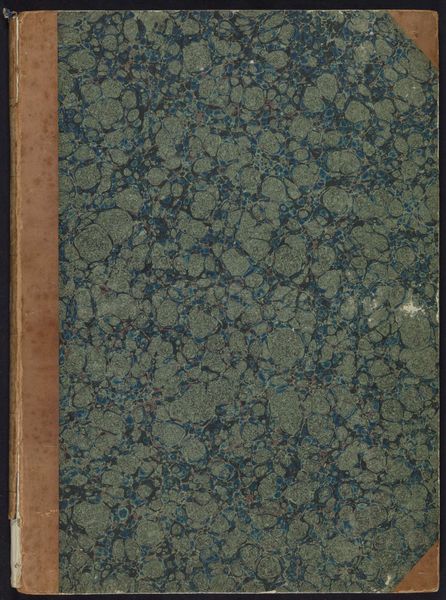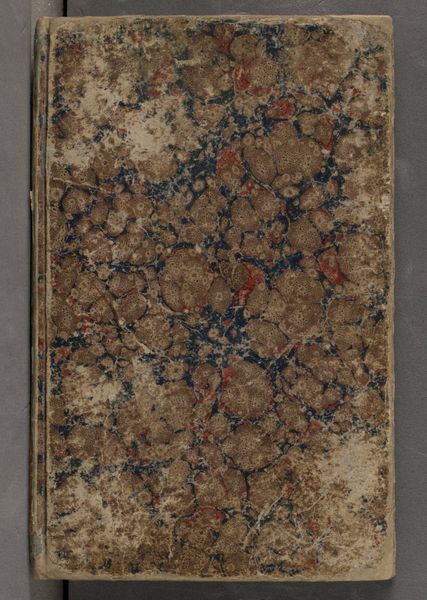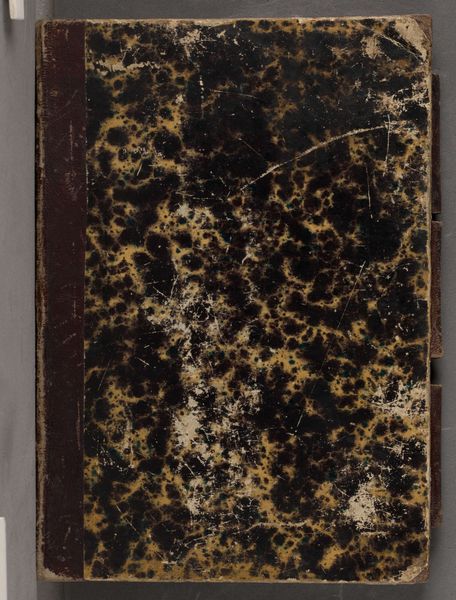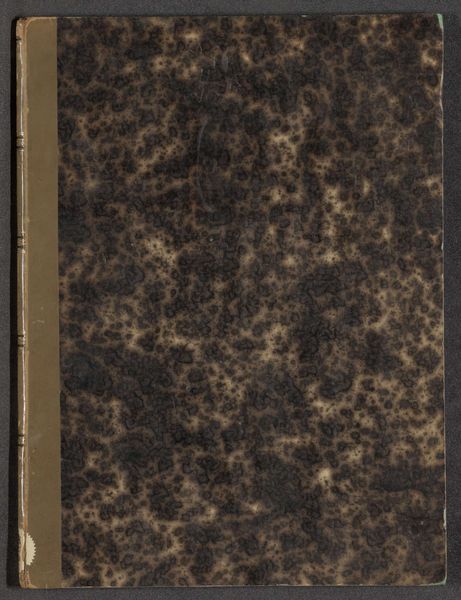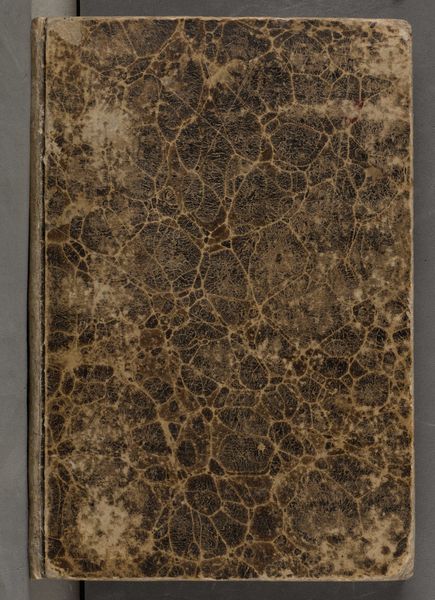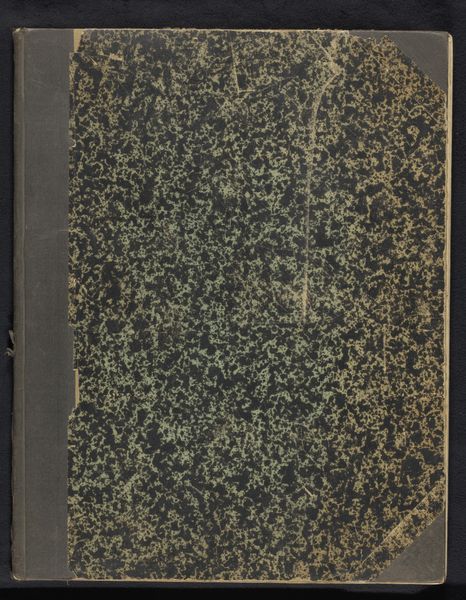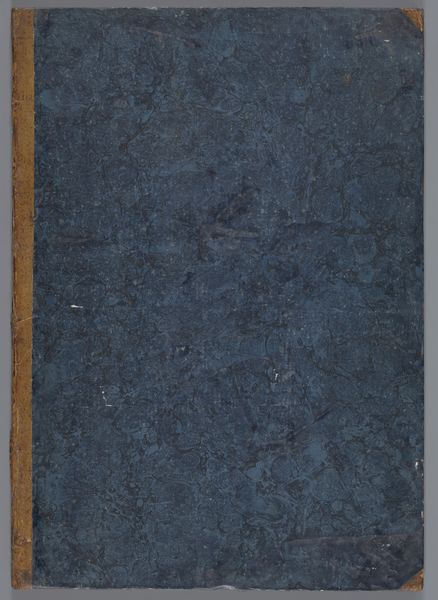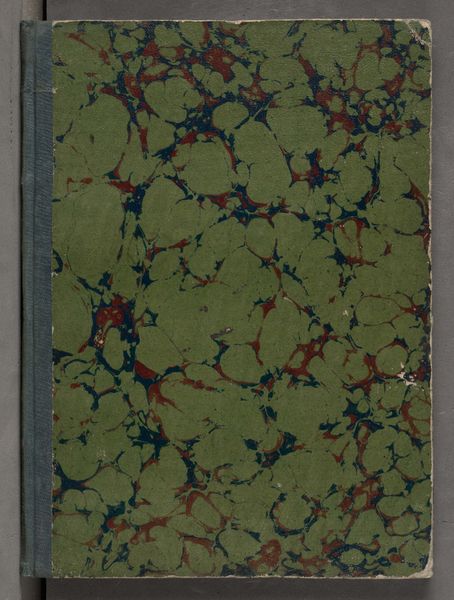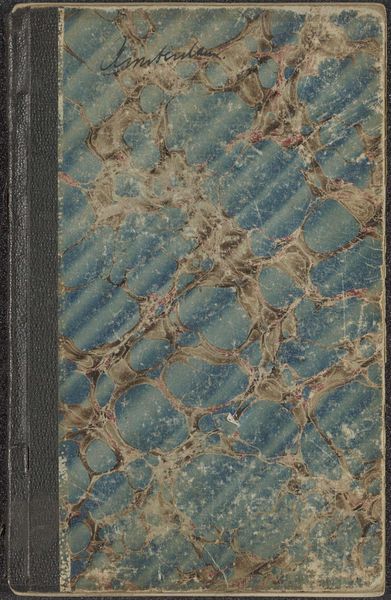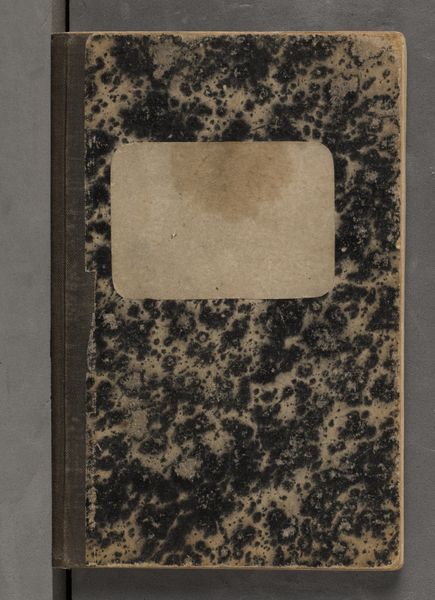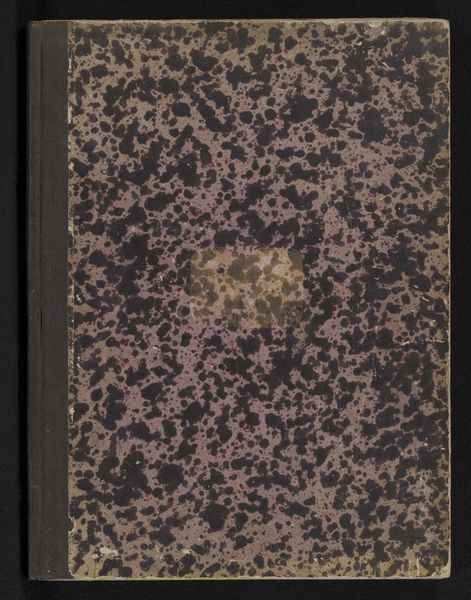
Copyright: Public Domain
Editor: We're looking at "Skizzenbuch," a sketchbook from 1840 by Ludwig Metz. It uses mixed media including ink and drawing. The cover has an interesting marbled pattern that makes it feel almost organic. What stands out to you about it? Curator: The cover’s intricate patterning immediately commands attention. Its tessellated forms create an arresting visual texture, don't you think? Editor: Yes, absolutely! The interplay of the dark blues and lighter greens definitely makes it feel very tactile, as if you could feel the pattern under your fingertips. Curator: Indeed. Notice how the seemingly random distribution of these cellular shapes creates a field that is simultaneously ordered and chaotic. Does the structure evoke any particular associations for you? Perhaps something botanical? Editor: I see what you mean! It’s like looking at cells under a microscope or maybe even aerial views of landscapes, which is surprising for a sketchbook cover. Curator: Precisely. Consider the artist's deliberate choice of these elements: the medium, the tonality, and their organization. Could this arrangement act as a sort of symbolic preface to the contents within? The artist uses pattern and decoration techniques here to guide and provide meaning to the owner. Editor: That’s a fascinating idea! Maybe the cover itself is a piece of art, a structured abstract to prime the creative pump, or, as you put it, act as the opening statement before even opening the sketchbook. Thanks, that perspective really shifts how I see this piece. Curator: My pleasure. The inherent visual components themselves possess the capacity to speak volumes.
Comments
stadelmuseum about 2 years ago
⋮
Ludwig Metz took this sketchbook, dated from May to June 1840, with him on one of his journeys through Hessia. The regular inscriptions document the artist’s itinerary from Friedberg via Marburg and Wetter and on towards northern Hessia. With few exceptions, he drew accurate pencil drawings of architectures and landscapes. The various Gothic churches along his route seem to have particularly interested the architect Metz, as he studied their architectures, floor plans and the surrounding landscapes in detail, often from different perspectives.For a full sketchbook description, please see “Research”.
Join the conversation
Join millions of artists and users on Artera today and experience the ultimate creative platform.
